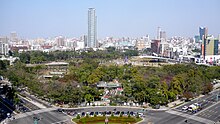This article needs additional citations for verification .(February 2014) |













This is a list of parks in Taiwan , Republic of China.
This article needs additional citations for verification .(February 2014) |













This is a list of parks in Taiwan , Republic of China.